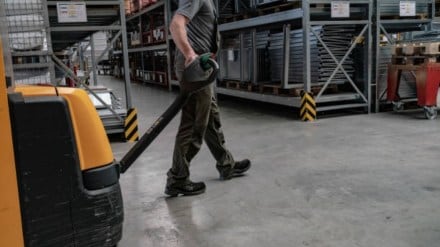SolidWorks has long championed the ethos of making innovation accessible. At the core of this vision is the belief that 3D design should not be restricted to industry veterans but should be an empowering tool for the next generation.
Gian Paolo Bassi, SVP, Dassault Systèmes, in an exclusive conversation with FinancialExpress.com on the sidelines of the 3DEXPERIENCE Conference in the US, explained, “At SolidWorks, our goal is to ensure that 3D design isn’t just for industry veterans, but also an empowering tool for the next generation. Initiatives like the Skill Force program are designed to bridge the gap between education and real-world application, ensuring that students are ready to step into the workforce with industry-grade tools at their disposal. We are committed to accelerating innovation by empowering young minds.”
Skill Force Program
According to him, “The Skill Force program exemplifies this commitment by offering students embarking on internships a full commercial version of SolidWorks. This initiative bridges the gap between education and real-world application, ensuring that students step into professional environments ready to create immediate value. Employers often lack the resources to provide software licenses for interns, creating barriers to productivity and learning.”
Adding, “By equipping students with industrial-grade tools at no cost to companies, SolidWorks enables seamless integration into the workforce. This initiative reflects the company’s broader vision—accelerating innovation by empowering young minds. A key driver behind this initiative is Sushit Jain, a dedicated SolidWorks leader who has played a pivotal role in shaping its educational outreach. His deep-rooted belief in the power of accessible technology underscores the company’s mission.”
Education, after all, is more than just affordability—it’s an investment of time, the most valuable resource a student has. Recognizing this, “SolidWorks continuously enhances learning experiences, ensuring that students acquire industry-relevant skills that make them indispensable in the modern workforce. This dedication extends beyond just software—it encompasses curriculum development, fresh ideas, and initiatives like “Fab in a Box,” which democratizes fabrication tools for students worldwide,” he states.
Industry 5.0: A New Paradigm
The transition from Industry 4.0 to Industry 5.0 represents a fundamental shift in technological philosophy. While Industry 4.0 prioritized automation, robotics, and digital connectivity, it often sidelined human-centric considerations. The disruptions caused by COVID-19 exposed this imbalance, underscoring the need for resilience, sustainability, and inclusivity in industrial planning.
As Paolo Bassi shared, “The transition to Industry 5.0 represents a fundamental shift. While Industry 4.0 focused on automation and digital connectivity, we’ve realized that it often sidelined human-centric considerations. Industry 5.0 aims to place humans at the center of innovation, fostering collaboration between humans and machines with AI-driven co-pilots and collaborative robotics. It’s about creating sustainable solutions with circular economies to address the vulnerabilities highlighted by global challenges, including economic imbalances and migration crises.”
Industry 5.0 places humans at the center of innovation. Unlike its predecessor, which often depicted robots in isolated cages, this new wave fosters collaboration between humans and machines. AI-driven co-pilots, collaborative robotics, and sustainable design principles are at its core. According to him, the rise of the circular economy is a crucial component, addressing economic disparities exacerbated by globalization. The pandemic revealed vulnerabilities in supply chains, prompting industries to rethink their reliance on global networks. Circular economies offer localized, self-sustaining solutions that can transform communities and reduce economic instability.
This shift in his opinion is not merely theoretical—it has tangible implications for global challenges like immigration. “Many migration crises stem from economic imbalances and lack of opportunity in local economies. By fostering sustainable industries with accessible technology and knowledge-sharing, Industry 5.0 can create self-sufficient communities, reducing the need for forced migration.”
The Role of India in Industry 5.0
India is not just participating in this transformation—it is leading it. With one of the world’s largest engineering talent pools, a rapidly growing R&D sector, and a thriving startup ecosystem, India is poised to play a critical role in Industry 5.0.
As Gian Paolo noted, “India’s role in Industry 5.0 cannot be overstated. With a large engineering talent pool, a rapidly growing R&D sector, and an increasingly vibrant startup ecosystem, the country is well-positioned to lead this transformation. India’s digital revolution, from embracing mobile connectivity to AI-driven advancements, sets a precedent for technological evolution. What’s particularly unique is India’s entrepreneurial spirit, where engineers aspire to build their startups rather than migrate to places like Silicon Valley.”
According to him SolidWorks’ expanding presence in India, including its state-of-the-art facility in Pune, is a testament to this potential. India’s digital revolution has already set a precedent. “From skipping landline infrastructure to embracing mobile connectivity, and from widespread digital payment adoption to robust AI-driven advancements, the country has shown its agility in technological evolution. What sets India apart is not just its technical expertise but its entrepreneurial spirit. A shift has occurred—where once the dream was to migrate to Silicon Valley, today’s engineers aspire to build their startups in Bengaluru, backed by a supportive ecosystem and financial resources.”
China vs. India: A Different Path
While China has made remarkable strides in AI and technology, innovation requires more than just scientific progress—it thrives in environments that foster creativity and individual expression.
As he highlighted, “While China has made significant strides in technology, India’s open innovation ecosystem positions it uniquely for leadership in Industry 5.0. Innovation thrives in environments that foster creativity and individual expression, and India offers that freedom. The ecosystem in India allows for the exploration and commercialization of ideas, which is critical in driving technological advancement.”
